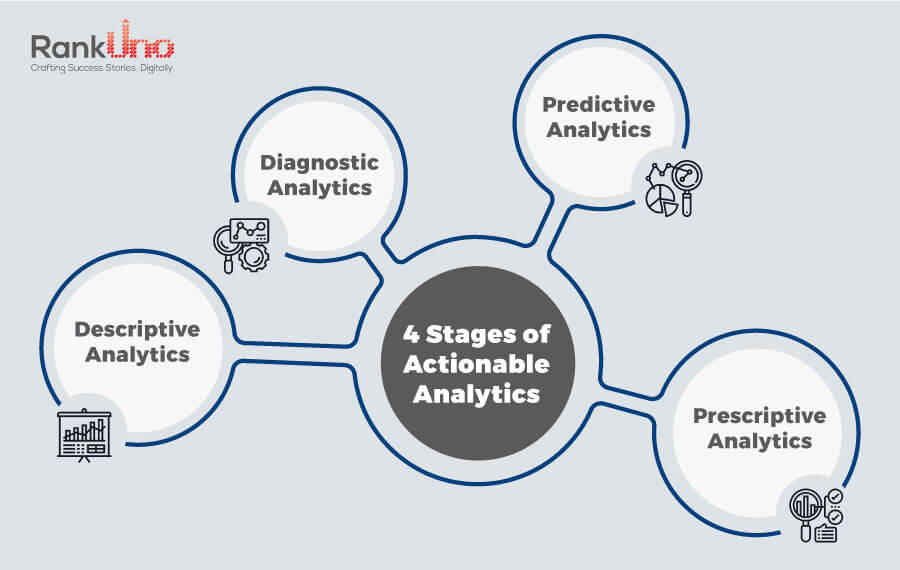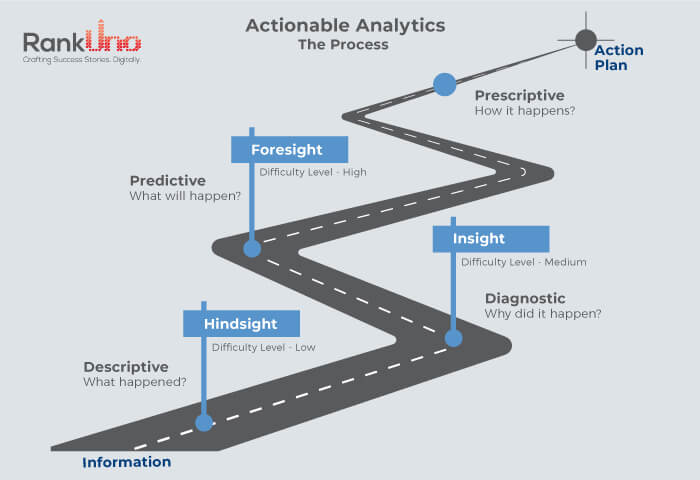Rapid advancements in technology have spawned various digital tools that help businesses gather and analyze operational data in an effort to refine their processes. This growing trend of collecting large amounts of business information to be leveraged towards sound decision-making has led to the term ‘actionable analytics’ being bandied around. It refers to any activity or application remotely related to these data-related activities. However, not all data collection and analysis can be referred to as actionable analytics, and we’re going to delve deeper into the definition of actionable analytics, and what it means for your business.
Defining Actionable Analytics
Actionable analytics can be defined as the building of analytical data, collected from various sources, into relevant insights that can be acted upon to achieve meaningful and profitable outcomes.
This involves putting large amounts of raw data into context, identifying trends and patterns, and being able to predict and influence future developments. Actionable analytics processes can be split into four stages — descriptive analytics, diagnostic analytics, predictive analytics, and prescriptive analytics. Let’s take a closer look at each of these and understand how they offer progressively increasing amounts of actionable information.

Descriptive analytics
This is the collection of data that is purely informational. As the name suggests, it describes what happened and nothing more. Metrics tracked and collected could include website traffic, sales figures, survey results, customer behavior, market trends, and more.
The descriptive analytics phase is merely the collection of data. It is a precursor to discovering and analyzing underlying patterns to glean actionable recommendations. This kind of retrospective data collection and summarization is what most analytics services provide today. Only with further interpretation can organizations gain a deeper understanding into what steps they should be taking to achieve their goals.
Diagnostic analytics
The next logical step after what happened is looking into understanding why this happened. Diagnostic analytics aims to provide businesses with insights into the underlying triggers behind certain observed patterns and trends. Understanding why a growing number of visitors to your e-commerce site are abandoning their shopping carts, or long-standing customers are cancelling subscriptions to your product, is a step towards crafting resolutions to these concerns.
Businesses use diagnostic analytics to identify revenue funnels as well as growth opportunities by investigating historic patterns in market trends, buying habits, consumer behavior, customer demographics, and more.
Predictive analytics
Once businesses have identified the why behind an occurrence or a trend, they can move onto the next stage of actionable analytics — predicting what could happen. Simply put, predictive analytics is the process of using large amounts of historical data to identify probable future scenarios. Armed with this knowledge, organizations can predict the far-reaching effects of their actions, and make timely strategic decisions to stay ahead of the competition in ever-evolving markets.
Predictive analytics can be used to make forecasts of an organization’s future cash flow based on data from historical financial statements, market trends, and sales projections.
Marketing teams can also use customer behavioral data to predict buying trends and develop relevant strategies and targeted advertisements.
Prescriptive analytics
Once we know what happened, why it happened, and what could happen, it’s obvious that organizations would use these insights to conclude what action to take. Prescriptive analytics put the ‘action’ into actionable analytics by recommending steps and strategies a business should take to achieve their goals. By analyzing predictive models that forecast various outcomes based on actions taken today, prescriptive analytics can provide sound, data-driven recommendations to enhance profits, increase customer engagement, boost sales conversion rates, optimize marketing activities, and a whole lot more.
Making your data more actionable

With so much raw data coming in from multiple sources, it is important to first identify the areas of the business that need the most attention, and understand the most relevant and impactful metrics that need to be tracked. AI-enabled algorithms can then efficiently analyze patterns in the data sets, correlate information from multiple reports, and come up with suggestions and recommendations.
The three steps to translating raw data into actionable insights are data tracking, data querying, and data algorithms. Let’s take a closer look at each of these steps.
- Data tracking
Making sure you’re tracking the right data can save a great deal of time and resources, and for this you need a tracking plan based on your specific business goals. For example, user data to be tracked will depend on where the user is in the customer journey; metrics relevant to long-standing customers will differ from those relevant to new customers, and precise data collection and tracking will yield actionable insights. Accurate data tracking can only be accomplished with clearly defined objectives in place. - Data Querying
Once your data is organized and focused on the most important metrics, it is important that you or your team know how to make the best of it. This is achieved by querying the required information from the collected metrics to put the data in the relevant context, and come to actionable recommendations and solutions. - Data algorithms
Machine learning algorithms evaluate and analyze large data sets to identify patterns and correlations based on specific data queries. These AI-enabled systems are capable of comparing various permutations and combinations of industry-related variables, to provide organizations with several possible future outcomes. From here, decision-makers can forge the way forward by using these insights to develop strategies that align with the company’s established goals.

The technology to efficiently gather and analyze the large amounts of data generated every day and deliver actionable insights is evolving at a rapid pace. Organizations that keep up with the latest developments in actionable analytics will have the ability to consistently develop clearly defined action plans to stay competitive.
Investing in cutting-edge analytics applications is a great way to ensure that you are making efficient use of your historical data, and it wouldn’t hurt to have an experienced data scientist on board to make the best of the tools at your disposal.
References:
1: https://www.innertrends.com/blog/actionable-analytics
2: https://online.hbs.edu/blog/post/descriptive-analytics





